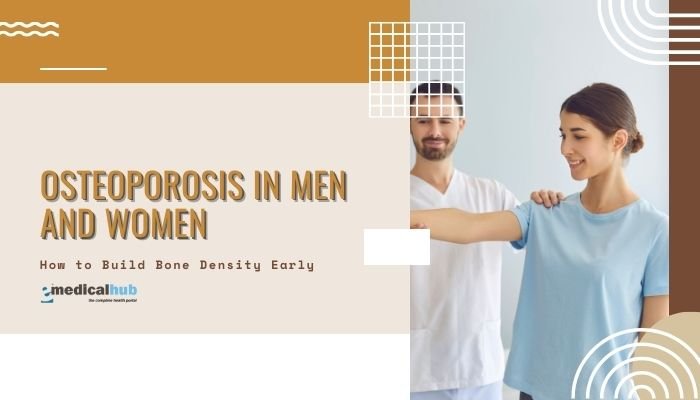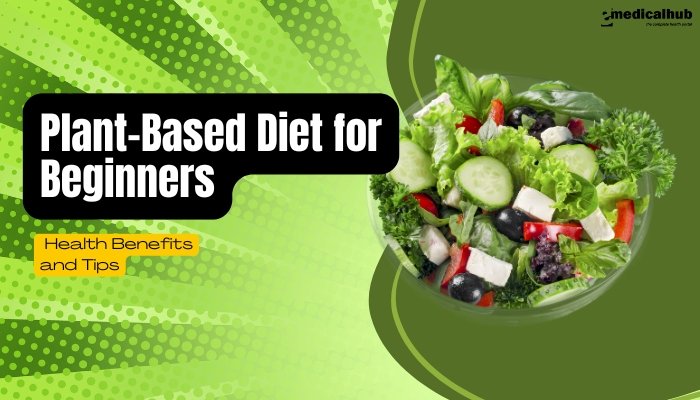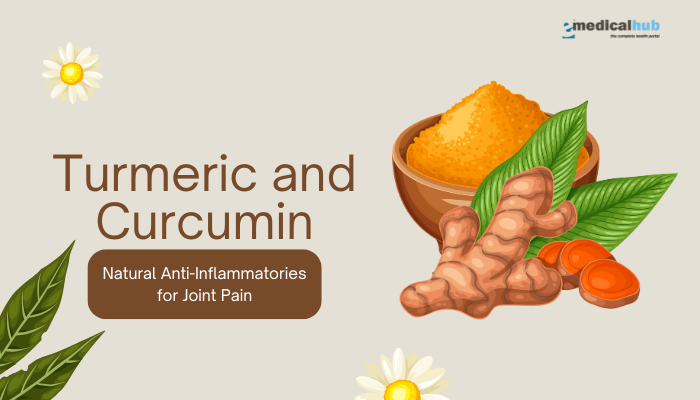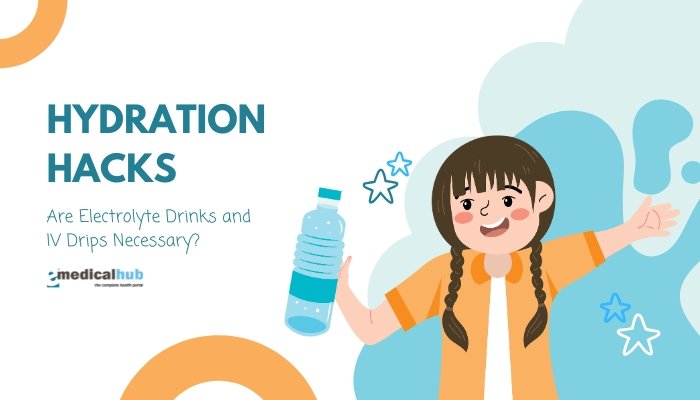Introduction
Osteoporosis often conjures images of frail, older women at high risk for hip fractures. While it is true that postmenopausal women face a particularly elevated danger of rapid bone loss, the condition also affects men, sometimes with equally debilitating consequences.
Characterized by weakening bones that fracture easily, osteoporosis remains a leading cause of disability among seniors worldwide. Yet contrary to the assumption that it’s an inevitable part of old age, much can be done earlier in life to strengthen bones and mitigate long-term risks.
Building and maintaining bone density is a lifelong endeavor, ideally starting in childhood and continuing through adulthood. Habits formed in one’s teens, twenties, and thirties can set a robust foundation for skeletal health decades later.
This article explores the physiology of bone, why women typically face faster age-related loss, and how men are not exempt from this “silent disease.” We will review key lifestyle factors—nutrition, exercise, hormone health—and strategies to start strong and stay strong, ensuring more resilient bones that weather the test of time.
Understanding Bone Health and Osteoporosis
What Is Osteoporosis?
- Definition: A skeletal disorder characterized by low bone mass and microarchitectural deterioration of bone tissue, leading to enhanced bone fragility and a higher fracture risk.
- Continuum: Osteopenia (mild bone density loss) often precedes full-blown osteoporosis. Many individuals are unaware of declining bone mass until a fracture occurs.
Bone Remodeling
- Dynamic Tissue: Bone is not static. Osteoclasts break down old bone while osteoblasts form new bone, a balance that ensures healthy turnover.
- Peak Bone Mass: Achieved in early adulthood (around age 30 for most people). This period is crucial—higher the peak, the more “bone reserve” one carries into midlife and beyond.
Why It Matters
- Fracture Consequences: Hip fractures can lead to loss of independence, chronic pain, or even mortality in severe cases. Vertebral fractures cause height loss, spinal deformities, or nerve compression.
- Healthcare Costs: Osteoporotic fractures are a major burden for healthcare systems globally, from hospital care to rehabilitation needs.
Bone Density: Differences Between Men and Women
Estrogen’s Role for Women
- Menopause Transition: Postmenopausal women experience a drastic decline in estrogen, a hormone protective for bone. This leads to accelerated bone loss, especially during the first 5–7 years after menopause.
- Early Menopause: Women who undergo early menopause or surgical removal of ovaries face elevated osteoporosis risk if not managed appropriately (e.g., hormone therapy or bone-sparing measures).
Testosterone’s Role for Men
- Less Dramatic Decline: Men typically maintain steadier testosterone levels. However, with aging, some men experience a drop in testosterone, contributing to slow but significant bone density decreases.
- Underdiagnosed: Because osteoporosis is stereotyped as a “woman’s disease,” men may be less frequently screened. Late detection in men can lead to more severe fractures or complications.
Lifespan Trends
- Women: Generally have smaller, thinner bones than men, thus are more susceptible once they lose the hormonal advantage.
- Men: Tend to fracture at older ages but face higher mortality rates post-hip fracture due to comorbidities.
Risk Factors for Osteoporosis in Both Sexes
Modifiable Factors
- Diet: Inadequate calcium, vitamin D, or protein intake hamper bone remodeling.
- Physical Inactivity: Sedentary lifestyles reduce mechanical stress that stimulates bone formation.
- Smoking: Toxic to bone cells, impairs calcium absorption, and disrupts hormones.
- Excess Alcohol: Interferes with bone-building cells (osteoblasts) and can reduce essential nutrient absorption.
- Body Weight: Low BMI individuals have less mechanical load on bones and smaller bone mass, boosting risk of fragility.
Non-Modifiable Factors
- Genetics: Family history of osteoporosis or fractures can reflect inherited predispositions to lower peak bone mass or faster bone loss.
- Ethnicity: Caucasian and Asian populations have higher rates of osteoporotic fractures, though it affects all ethnic backgrounds.
- Age: Both men and women lose bone mass with age, but at varying rates.
Endocrine Disorders and Chronic Diseases
- Hormonal Imbalances: Hypogonadism in men, hyperthyroidism, hyperparathyroidism.
- Chronic Use of Steroids: Glucocorticoids (e.g., prednisone) can accelerate bone loss, an important consideration in autoimmune conditions.
- Gastrointestinal Disorders: Malabsorption (celiac disease) or inflammatory bowel diseases can hamper nutrient uptake vital for bone.
Building Bone Density Early in Life
Peak Bone Mass and Its Importance
- Windows of Opportunity: Childhood, adolescence, and young adulthood are pivotal periods for bone accumulation.
- Impact on Future Risk: The higher one’s peak bone mass, the more “buffer” against later age-related decline and fractures.
Nutrition for Bone Accrual
- Calcium: Critical for mineralizing bone. Dairy, fortified plant-based milks, leafy greens, or tofu provide daily targets (1,000–1,300 mg depending on age/gender).
- Vitamin D: Aids calcium absorption; sources include sunlight exposure, fatty fish, egg yolks, or fortified foods. Many require supplementation, especially in latitudes or seasons with limited sun.
- Protein and Other Nutrients: Adequate protein, magnesium, phosphorus, and vitamins K and C also support bone matrix formation.
Physical Activity in Youth and Young Adulthood
- High-Impact or Resistance Exercise: Jumping, running, weight-lifting encourages new bone deposition and improved bone geometry.
- Sports: Activities like basketball, dance, or tennis—where ground reaction forces are higher—drive robust bone gains.
- Gender and Culture: Encouraging girls to engage in sports helps reduce the typical gap in bone mass that appears by adulthood.
Adult Life: Maintaining and Minimizing Loss
Dietary Continuation
- Sustained Nutrient Intake: Calcium, vitamin D, protein remain cornerstones. Middle-aged adults can maintain bone density by meeting daily recommended amounts.
- Moderation in Caffeine: Excess caffeine can hamper calcium retention.
- Alcohol: Keep within recommended guidelines to avoid detrimental bone and hormone impacts.
Exercise Routines
- Resistance Training: Squats, deadlifts, or push-ups preserve or boost bone density.
- Weight-Bearing Cardio: Walking, hiking, or jogging is beneficial over non-weight bearing like swimming or cycling.
- Balance and Coordination: Tai chi or yoga reduce fall risk, important in preventing fractures, especially as we age.
Hormone Checks
- Men: If suspecting androgen deficiency (e.g., low libido, fatigue), screening for testosterone levels might be warranted.
- Women: Perimenopausal or postmenopausal transitions can accelerate bone loss. Discuss hormone replacement therapy or alternatives if indicated, balancing potential risks/benefits.
Avoiding Negative Influences
- Tobacco Cessation: Quitting smoking leads to better bone outcomes.
- Maintaining Healthy Weight: Extreme underweight or eating disorders are detrimental to bone. Overweight often has a protective effect on bone mass, but obesity correlates with other metabolic issues.
Recognizing Signs and Getting Diagnosed
Silent Nature of Osteoporosis
- Minimal Early Symptoms: Typically, no discomfort until a fracture occurs, which is why it’s called a “silent disease.”
- Warning Fractures: Wrist or vertebral fractures from minimal trauma may indicate compromised bone strength.
Screening and Tests
- DEXA Scan (Dual-Energy X-ray Absorptiometry): The gold standard for measuring bone mineral density (BMD). Usually checks spine, hip, or total body.
- T-Score: The difference in bone density compared to a healthy 30-year-old adult’s peak bone mass. A T-score ≤ –2.5 signals osteoporosis.
- FRAX Score: A tool from WHO to predict 10-year fracture risk, integrating BMD and clinical risk factors.
Who Should Be Screened?
- Postmenopausal Women: Usually recommended for DEXA around age 65 or earlier if risk factors present.
- Men: Some guidelines suggest men 70+ or men 50–69 with risk factors get scanned. Still, screening men is often underutilized.
- Other Indications: If you’ve had a fragility fracture, or are on long-term steroids, consider earlier bone assessments.
Treatment Options for Low Bone Density
Lifestyle First
- Diet and Exercise: As discussed, always recommended. Even with medication, lifestyle modifications remain key.
- Fall Prevention: Home safety measures, improving balance, vision checks are vital for older adults.
Supplements
- Calcium and Vitamin D: Typically, aim for ~1,000–1,200 mg/day of calcium and 600–800 IU of vitamin D, though some require higher levels.
- Other Nutrients: Check magnesium or vitamin K if recommended by a healthcare provider.
Pharmacological Therapies
- Bisphosphonates: Alendronate, risedronate, or zoledronic acid slow bone breakdown. Common first-line for postmenopausal women or men at risk.
- Denosumab: An anti-RANKL monoclonal antibody that reduces osteoclast activity, used if bisphosphonates are contraindicated or in high-risk individuals.
- Selective Estrogen Receptor Modulators (SERMs): E.g., raloxifene—mimics estrogen’s protective effect on bone but not other tissues.
- Anabolics (Teriparatide, Abaloparatide): Stimulate new bone formation. Indicated in severe cases or those unresponsive to anti-resorptives.
- Hormone Therapy: For symptomatic postmenopausal women, short-term hormone replacement can also help bone density. Weigh potential risks.
Monitoring
- Repeat DEXA: Usually every 1–2 years to gauge therapy efficacy or progression.
- Markers of Bone Turnover: Blood or urine tests (e.g., serum CTX, P1NP) can reflect changes in bone resorption/formation.
Preventing Falls and Fractures
Balance and Strength
- Functional Exercises: Tai chi, yoga, or targeted programs enhance proprioception, reduce trip hazards.
- Lower-Body Strength: Building muscle around hips, thighs, and core stabilizes posture.
Home Environment
- Adequate Lighting: Minimizing glare or dark corridors.
- Removing Clutter: Rugs or loose cables can trip older adults.
- Grab Bars and Railings: Installing them in bathrooms or staircases if mobility is compromised.
Vision and Footwear
- Regular Eye Exams: Uncorrected vision errors can lead to missteps.
- Supportive Shoes: Non-slip soles, proper arch support help maintain stable footing.
Myths and Realities about Bone Health
“Only Women Need to Worry About Osteoporosis”
- Reality: Men can lose bone mass too, just more gradually. But because they may be diagnosed later or have bigger bones, fractures can be more dangerous if overlooked.
“Dairy Is the Only Way to Get Calcium”
- Reality: Leafy greens, fortified plant-based milks, tofu, sardines, or almonds also provide calcium. Good variety is possible even in vegan diets.
“High-Impact Exercise Is Dangerous for Bones”
- Reality: While caution is needed for advanced osteoporosis, moderate impact training earlier can build or maintain bone mass. Overly avoiding it might lead to greater bone loss.
“Bone Loss Always Happens, Nothing Helps”
- Reality: While some decline is normal with age, many measures—nutrition, exercise, medications—successfully slow or even partially reverse bone density loss.
Conclusion
Osteoporosis is not reserved for older women alone—men, younger adults, and those with specific risk factors can all suffer from fragile bones if they neglect early preventive steps. The remarkable aspect of bone health is how modifiable it is through consistent, relatively simple habits: balanced nutrition (especially with adequate calcium, vitamin D, and protein), regular weight-bearing or resistance exercise, and limiting negative influences such as smoking or excessive alcohol. For those with suspected low bone mass or a family history of fractures, screening via DEXA scans and potential interventions (from lifestyle changes to prescription therapy) can profoundly lower the risk of debilitating fractures down the line.
By focusing on building and maintaining bone density from childhood through midlife, we can create a skeletal “savings account” that supports an active lifestyle well into old age. Ultimately, robust bones are fundamental for mobility, independence, and quality of life. Pairing healthy living strategies with medical guidance ensures that both men and women stand on solid ground—literally and figuratively—as they age.
Frequently Asked Questions (FAQ)
- At what age should I start worrying about bone density?
- Ideally, building strong bones begins in childhood and adolescence. Still, in adulthood, it’s wise to adopt protective measures and screen if risk factors arise.
- How much calcium do I really need?
- Adults generally require ~1,000 mg/day; postmenopausal women and men over 70 might need closer to 1,200 mg/day. Specific needs vary by region and guidelines.
- Do I need vitamin D supplements if I get lots of sunshine?
- Possibly not, but this depends on your location, skin pigmentation, lifestyle, and lab results. Many people remain deficient, especially at higher latitudes or during winter.
- Is high-protein diet bad for bones?
- In excessive amounts, some argue it might increase calcium excretion. But in balanced contexts, protein is crucial for bone matrix. The overall effect is typically beneficial with adequate calcium intake.
- Which exercise is best for osteoporosis prevention—running or lifting weights?
- Both are beneficial. Impact (running) and resistance (weights) each stimulate bone in different ways. A combination is often ideal for diverse skeletal benefits.
- I’m allergic to dairy. Can I still protect my bones?
- Absolutely. Calcium-fortified alternatives (like almond or soy milk), leafy greens, tofu, sardines, or supplements can meet daily needs.
- How quickly do osteoporosis medications work?
- Many require months to show measurable BMD improvements, with best results over a year or longer. Regular monitoring and adherence are crucial.
References
- International Osteoporosis Foundation. Osteoporosis key facts. 2021.
- National Osteoporosis Foundation. What is osteoporosis and what causes it? 2022.
- Kanis JA, et al. European guidance for the diagnosis and management of osteoporosis. Osteoporos Int. 2019;30(1):3-44.
- NIH Office of Dietary Supplements. Calcium and vitamin D fact sheet for health professionals. 2021.
- Looker AC, Melton LJ, Borrud LG, et al. Prevalence of low femoral bone density. J Bone Miner Res. 2012;27(4):743-750.
- Bliuc D, et al. Mortality risk associated with low-trauma osteoporotic fracture. JAMA. 2009;302(5):513-521.
- Compston JE, McClung MR, Leslie WD. Osteoporosis. Lancet. 2019;393(10169):364-376.
- Cosman F, et al. Clinician’s guide to prevention and treatment of osteoporosis. Osteoporos Int. 2014;25(10):2359-2381.
- Tang BM, et al. Use of calcium or calcium in combination with vitamin D supplementation to prevent fractures. Lancet. 2007;370(9588):657-666.
- Sànchez-Rodríguez MA, et al. Effects of exercise on bone health in healthy postmenopausal women. J Bone Miner Res. 2019;34(7):120-128.
- North American Menopause Society (NAMS). Hormone therapy and bone health in postmenopausal women. 2020.
- Eastell R, Rosen CJ, Black DM, et al. Pharmacological management of osteoporosis. Lancet Diabetes Endocrinol. 2019;7(7):513-526.
- Gennari L, et al. WNT signaling in bone metabolism. Nat Rev Endocrinol. 2021;17(3):129-144.
- Leslie WD, Lix LM, Tsang JF, et al. Validation of ten-year fracture risk prediction. J Clin Endocrinol Metab. 2010;95(1):60-67.




